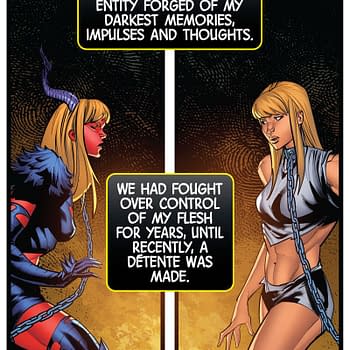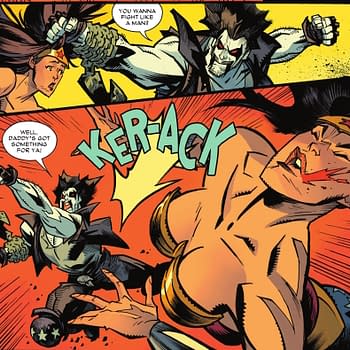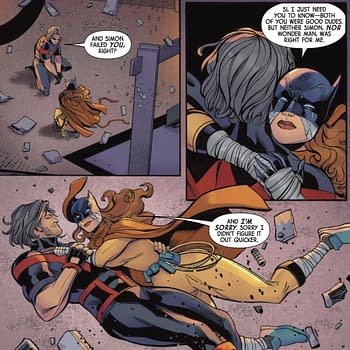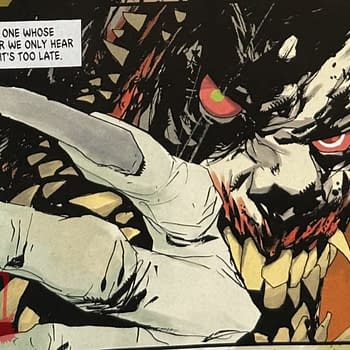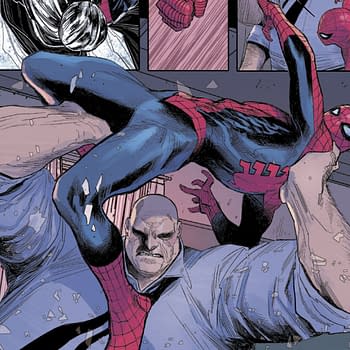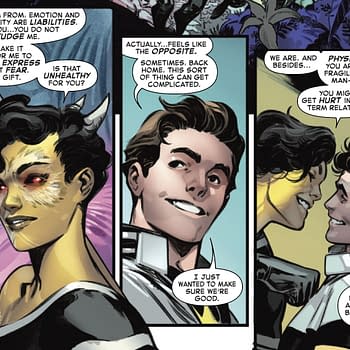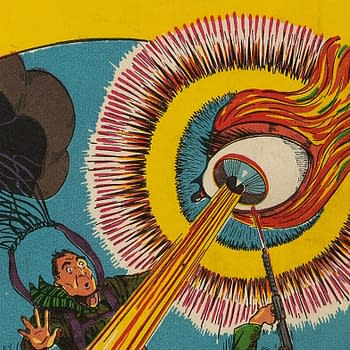Posted in: Comics | Tagged:
Meet The New Boss, Worse Than The Old Boss: Manhattan Projects #6
Louis Falcetti writes for Bleeding Cool;
I can't imagine a world where someone needs to be convinced of the superiority of creator owned books, but if by some insane cosmic hiccup that conversation had to occur, I can think of no better fuel for the creator owned fire than Jonathan Hickman and Nick Pitarra's The Manhattan Projects. Pitarra has already shown that he can draw freaked out, nightmare future madness under Hickman's heady plots but with Manhattan he's drawing a freaked out, nightmare past and it looks even better than it tastes (truth be told, the comic tastes terrible, it's one glaring fault).
Each issue of Manhattan Projects gives us another slice of the story, there's no central protagonist (though the case could be made that Richard Feynman fits that role, as he is quoted in the beginning of each issue). Though at the same time Joseph Oppenheimer (Robert's evil, crazy twin) has been given a lot more page space than Feynman. That's the kind of book this is, you have to wonder who the story is really about, the brain eating psychopath twin of one of history's greatest scientific minds or the dashing, infinitely quotable, super genius Richard Feynman. When everyone gets upset, following each Alan Moore industry attack and insistence that all the books are bad, I hope it's this book that is the forefront of people's minds as they angrily think "You must not be reading ___". With each issue we're introduced to another character and given the opportunity to approach the story from another direction and this month's #6 was no exception.
We meet back up with Hemutt Grottrup, who readers have only seen scurrying away from the cybertronic hulk of a nightmare nazi Wernher Von Braun. If you ever heard that it was better to be captured by the Americans in World War II than the Russians, you definitely heard right. Especially if you were a super genius. While Operation: Paperclip gave old, dirty nazis, new shiny identities, the Russian flipside was a bit darker. And grimier. And chainier.
Pitarra's range as an artist is highlighted by the stellar coloring job of Jordie Bellaire who adds surreal dimensions to Pitarra's loose yet refined lines. Grottrup runs from the castle a hot, red mess but collapses in the snow, totally blue except for the crimson blood highlighting his haggard features. Hickman gives Pitarra characters to work with who are not only from both sides of the human spectrum (weak/strong) but from both side of the universe (here/Star City). Grinning sadists brand swastikas, Nazi slave scientists wallow, and Yuri Gagarin smiles the dopey smile that all pawns must wear as their sad stories come to expected ends.
One of Hickman's strengths as a storyteller is that he doesn't slow down to make sure you're still there, he wind sprints through ideas and you need to make sure you can keep up on your own. There's a Russian brain in a jar on a scary robot body, what's the deal with that? Never mind what the deal is, just set mind to blown and try to keep up. Jellyfish-headed aliens mingle with ex-Nazis and Russian military brass and if you're in some desperate Star Wars like mind to catalog the hell out of everything so we know what to call it when it's a prize in your cereal, well you're in the wrong book buster. Not that Hickman throws things out willy nilly, or even simply willy, no, there's a plan and as each chapter closes and we get closer to seeing the all at the end of it all, that plan gets darker and darker.
Each chapter of Manhattan Projects simultaneously propels the story forward while giving us a glimpse backwards, all the while delivering powerful themes and messages so that each issue is a tight, self contained story yet still part of something huge and amazing. The Manhattan Projects is a gift from the sci-fi comic book gods, let's just hope they don't call for a sacrifice.










